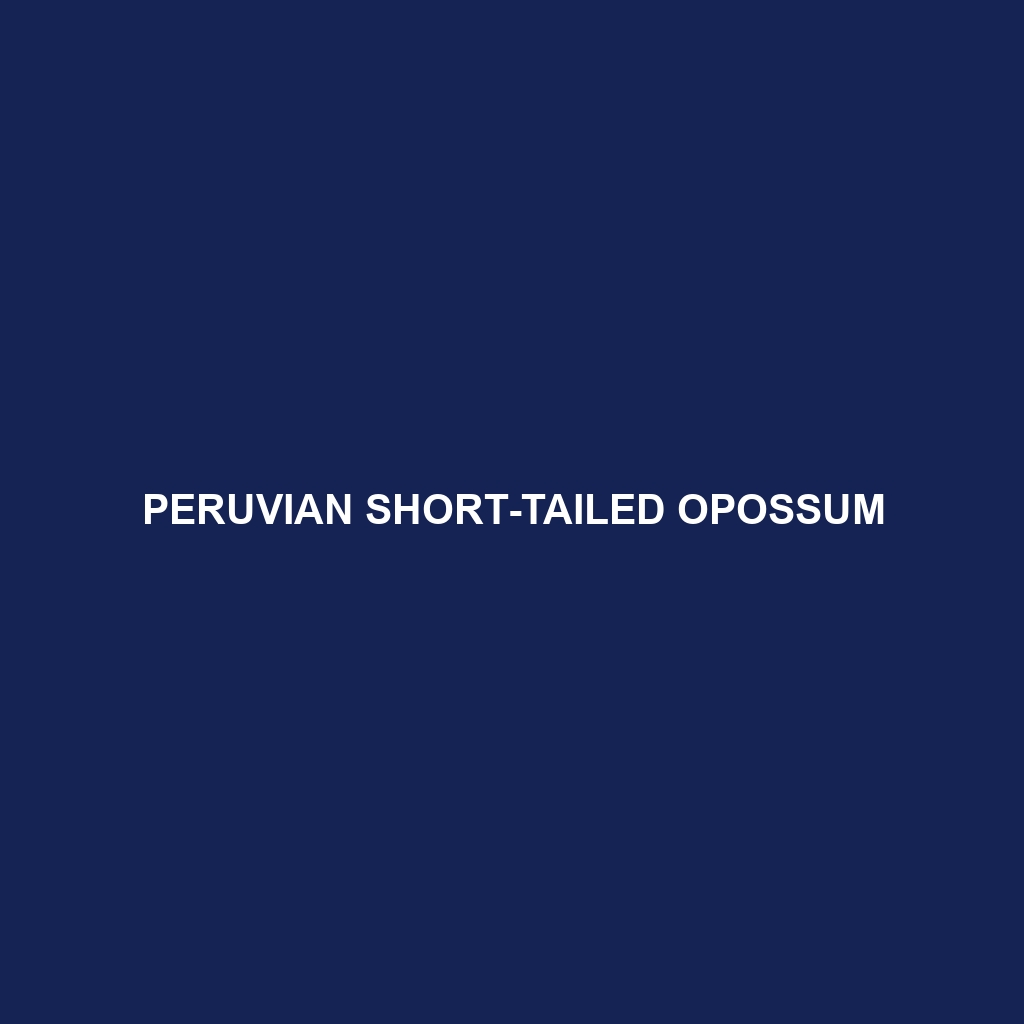Peruvian Short-tailed Opossum: A Detailed Guide
The Peruvian Short-tailed Opossum (Monodelphis peruviana) is a small marsupial native to the tropical and subtropical regions of Peru. Known for its distinctive short tail and agile movements, this nocturnal creature boasts a fascinating array of attributes that make it a unique subject of study and admiration.
Physical Characteristics
Size: The Peruvian Short-tailed Opossum typically measures between 10 to 14 centimeters (4 to 5.5 inches) in body length, with a tail length that is significantly shorter, around 7 to 9 centimeters (2.7 to 3.5 inches).
Weight: They generally weigh between 30 to 50 grams (1 to 1.8 ounces).
Coloration: Their fur is predominantly a mix of gray and brown, with a lighter, often white, underbelly. This coloration aids in camouflage within their natural habitat.
Special Features: One of the most striking features of the Peruvian Short-tailed Opossum is its short, stout tail which is not prehensile, unlike many other opossums. Additionally, they have a pointed snout and sharp teeth adapted for their omnivorous diet.
Behaviors
Social Interactions: These opossums are generally solitary creatures, engaging with others primarily during the breeding season. They communicate through a series of vocalizations and scent markings.
Feeding Habits: As omnivores, their diet includes a variety of insects, small vertebrates, fruits, and seeds. They are adept hunters and foragers, often seen scurrying through leaf litter in search of food.
Ecological Roles: The Peruvian Short-tailed Opossum plays a vital role in controlling insect populations and dispersing seeds, thus contributing to the health of their ecosystem.
Habitat and Adaptations
Habitats: This opossum is typically found in lowland tropical rainforests and subtropical forests of Peru. They prefer dense ground cover where they can hide from predators and find ample food.
Adaptations: They have developed sharp claws and strong limbs for digging and climbing. Their acute sense of smell and hearing help them locate food and detect danger in their nocturnal environment.
Conservation Status
Status: Currently, there is limited data on the population status of the Peruvian Short-tailed Opossum. However, habitat destruction due to deforestation poses a significant threat to their survival.
Conservation Efforts: Efforts to conserve their habitat are crucial. Protecting the rainforests of Peru through legal frameworks and sustainable practices can help ensure the survival of this and other native species.
Fun Facts
Marsupial Oddities: Unlike the typical marsupial, the Peruvian Short-tailed Opossum does not have a pouch. Instead, the young cling to the mother’s fur for protection and nourishment.
Survival Skills: They possess an impressive ability to escape predators, using their agility and small size to hide in tight spaces where larger predators cannot follow.
Varied Diet: Their ability to consume a wide range of foods makes them highly adaptable to different environmental conditions and helps them survive in varying habitats.
The Peruvian Short-tailed Opossum is a remarkable example of nature’s ingenuity, showcasing unique attributes and behaviors that make it a valuable component of its native ecosystem. Understanding and protecting this small yet significant creature is essential for maintaining the biodiversity of Peru’s forests.
